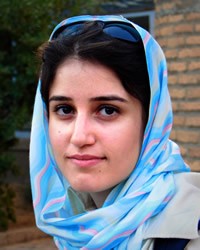Persian in Italy

Photo Source:
Hamed Saber - Flickr
Creative Commons
|
Send Joshua Project a map of this people group.
|
| People Name: | Persian |
| Country: | Italy |
| 10/40 Window: | No |
| Population: | 17,000 |
| World Population: | 48,380,900 |
| Primary Language: | Persian, Iranian |
| Primary Religion: | Islam |
| Christian Adherents: | 0.50 % |
| Evangelicals: | 0.20 % |
| Scripture: | Complete Bible |
| Ministry Resources: | Yes |
| Jesus Film: | Yes |
| Audio Recordings: | Yes |
| People Cluster: | Persian |
| Affinity Bloc: | Persian-Median |
| Progress Level: |
|
Introduction / History
By definition, Persians (also known as Iranians) are an ethnic group native to Iran. The Persian language, called Farsi, is part of the Indo-Iranian language family, and is the official language of Iran. Dari, the language of the elite in Afghanistan, is a dialect of modern Persian. Around 1000 B. C., Persian groups began to settle in the territory that is now Iran. Loosely associated Persian tribes became a more cohesive political unit under the Achaemenian dynasty. Their unity soon made them the dominant ethnic group in the region. For 1,200 years, Persia maintained a culture that became increasingly more complex and rigid. This laid the foundation for a successful Arabian conquest in the seventh century A. D. It was not until the Islamic revolution of 1979 that massive changes came both to Iran and to the Persian people.
Although the vast majority of Persians now live either in Iran or in one of the nearby Middle Eastern countries, small Persian communities can also be found in many other nations around the world including Italy. Though there were small numbers of Persians in Italy as early as the days of the Roman Empire, Italy has never been a favored destination for Persians. They still have a small population in this southern European city.
What Are Their Lives Like?
While the Iranian presence in Italy has historically been sparse, there have been notable times when migrants entered the country for education, business, and refuge. For example, the Iranian-Iraqi conflict of the 1980s produced a wave of refugees that went to Europe seeking safety. Persians in Italy tend to have close ties to their homeland and do not consider themselves to be immigrants; but they often maintain the goal of eventually returning to the motherland. Their bonds are more with family than with Iran itself. Today there are a few Persians who have come recently to Italy, but they are still considered to be an unreached people group.
What Are Their Beliefs?
Prior to the Arab invasions, the Persian religion was Zoroastrianism. This religion taught that there was an eternal struggle between the forces of good and evil. Shia Islam became the national religion of Iran in the sixteenth century, at which time the ulama (clergy) began playing an important role in both the social and political lives of the people. Today, most Iranians are officially Shia Muslims of the Ithna Ashari branch. However, the Iranians who have migrated to the Italy are usually disillusioned with state-enforced spirituality, especially in light of the hypocrisy which they saw in the Iranian government. For this reason, most are either Shia Muslim in name only or they are secularized. Fortunately, being in a place where there is freedom of religion gives them a chance to hear and respond to the claims of Jesus Christ. The main obstacle is a lack of workers.
What Are Their Needs?
Iranians in Italy need to know there is hope—not in a religious institution, but in the only Savior, Jesus Christ. It will take loving and patient ambassadors for Christ to go to them. There is a need for more workers who will go with the love of Christ.
Prayer Points
Pray for a Disciple Making Movement to flourish among Iranians all across Europe. Ask the Lord to call and send out people who are willing to share the love of Christ with Iranians. Pray that God will raise up faithful intercessors who will stand in the gap for the Iranians in Europe. Ask God to strengthen, encourage, and protect the formerly Muslim Iranians who have come to faith in Christ.